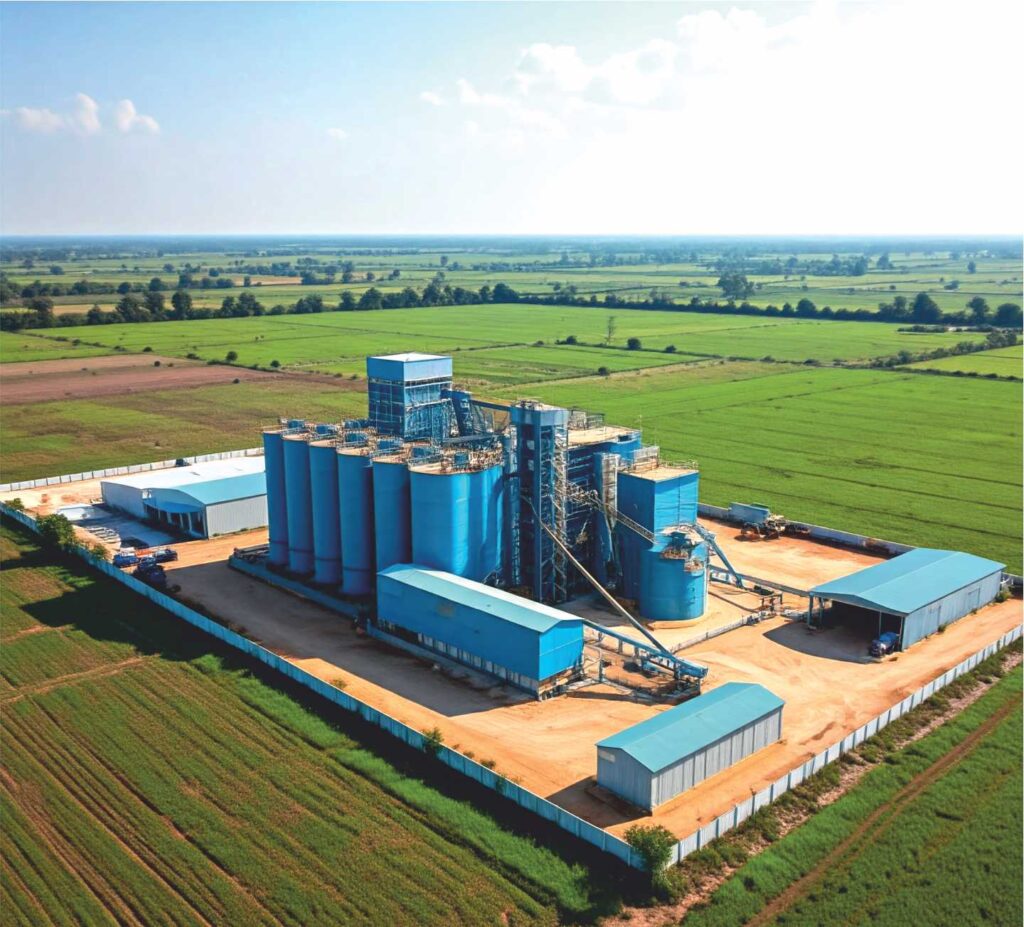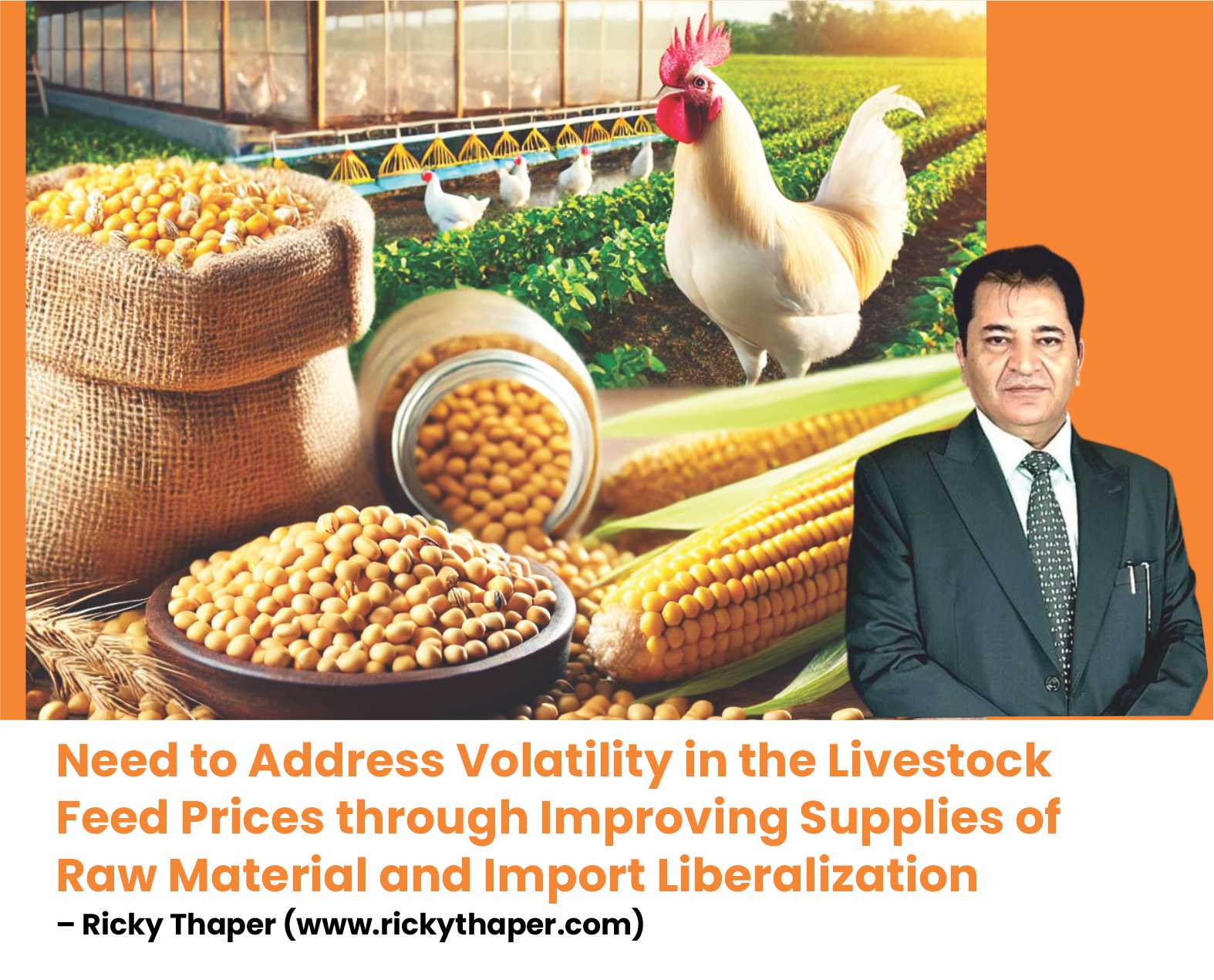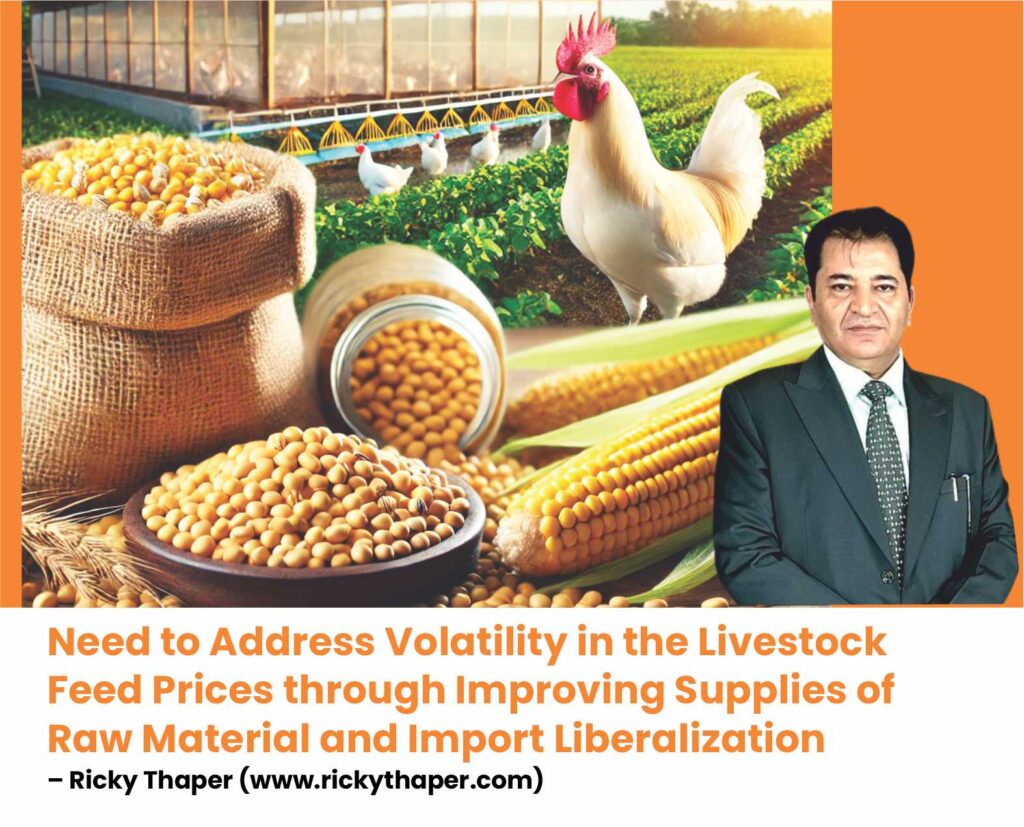In the last five years, the agriculture sector has grown at an average growth rate of 4.18 percent per year. According to the Economic Survey (2023-24) presented to parliament, the allied sectors of Indian agriculture are steadily emerging as robust growth centres and promising sources for improving farm incomes. From 2014-15 to 2022-23, the Livestock sector grew at an impressive Compound Annual Growth Rate (CAGR) of 7.38 per cent. The contribution of Livestock to the total Gross Value Added (GVA) in agriculture and allied sectors also increased. In 2022- 23, the Livestock sector contributed 4.66 per cent of the total GVA, significantly boosting the per capita availability of milk, eggs and meat, according to the economic survey.
The Livestock sector is an important sub-sector of agriculture which plays a significant role in generating gainful employment in the rural sector, particularly among the landless, small and marginal farmers. Poultry production in India valued at $ 30 billion has taken a huge-leap in the last four decades, emerging from conventional farming practices to commercial production systems with state-of-the-art technological interventions. Currently the sector is estimated to employ more than 6 million people either directly or indirectly. The small and medium size farm (5000 birds onwards) mostly engaged in contract farming systems under larger integrators or companies.
A report titled ‘Vision 2047’ Indian Poultry sector by Confederation of Indian Industry (CII) has stated that the growth in the poultry sector in the country has been attributed to the commercial poultry industry which accounts for 85% of production while the rest of 15% of the output comes from the traditional backyard poultry.
India has transformed their poultry farming industry through major investments in breeding, hatching, rearing, and processing of chicken. India, as the third-largest producer of eggs (129.60 billion) and the fifth-largest producer of poultry meat (aprox. 6 million tonnes) globally. As per the FAOSTAT 2, the USA has 17% share in global poultry meat production followed by China (12%), Brazil (11.7%), Russia (3.8%) and India (3.5).
According to a latest Reserve Bank of India (RBI) working paper on ‘Livestock and Poultry Inflation in India’, within livestock, poultry meat production (from broiler industry) has grown steadily with the emergence of vertically integrated poultry producers. However, the annual per capita consumption of poultry meat aprox. 6.5 kg in India, is low by global standards. Broilers bird placement in India is about 5-5.5 billion annually while the layer placement is estimated at around 300 million.
India ranks fourth globally in terms of livestock feed (poultry, dairy, aqua) production at 52.83 million tonne (MT) in 2023, which is an increase of more than 13% compared to 46.58 MT in 2022. India’s soybean production is estimated around 12.2 MT against Brazil (169 MT) and USA (120 MT) in 2023. However, according to feedback received from various poultry associations, broiler feed demand was 16 MT in 2022-23 and projected to increase to 18.6 MT in 2025-26. Layer feed demand is currently projected at 11.9 MMT which is likely to increase to 15.9 MMT by 2025-26. Cattle feed demand is expected to rise from 16.03 M to 19.64 MT in the next couple of years. Aqua feed is likely to rise from 2.43 MT to 3.1 MT. Overall feed demand is set to rise to 57.24 MT by 2025-26. Soymeal consumption for broiler, layer, cattle and aqua feeds is projected to increase from 6.6 MT to 7.33 MT.

Recently, there has been increasing reports of adulteration in soybean meal, which could adversely impact the growth of the poultry sector. The adulteration reduces the nutritional value of the poultry feed and may result in severe health implications of birds, yield and can cause mortality of birds which can hit farmers’ income through loss in output. At present there are no strict measures initiated for dealing with the issue.
Creation of a Bureau of Indian Standard certification for soybean meal would result in the poultry farmers getting access to quality and nutritionally enriched feed which would be vital for maintaining the health of poultry and ensuring optimal productivity in the rising poultry sector.
With rising demand for feed, the output has to increase in comparison to increase in demand. To sustain the growth in the livestock sector, Import Liberalization for corn and soybean /soybean meal is must. Soybean meal is a key protein source for poultry feed and directly impacts the health, growth, and yield of birds. According to SOPA reports, soybean production in the 2023-24 oil year (October-September) is estimated at 11.87 million tonne (MT) while carry forward stock was 2.4 MT and imports were 0.6 MT. Out of these, 1.3 MT has been retained for seed purpose while total stock available for crushing is 13.58 MT.
In the case of soybean meal output, 9.46 MT was produced in 2023-24 oil year and there was carry forward stock of 0.11 MT and imports were 0.25 MT. Out of the total availability of soybean meal, 2.1 MT were exported while around 0.8 MT was used as domestic consumption for food purpose in 2023-24 oil year. Around 6.6 MT of soymeal used for feed last oil year.
The government recently substantially hiked import duties on both refined and crude edible oil – palm, soybean and sunflower. This move is expected to boost market prices of soybean. The government has just approved the national mission on edible oils-oilseeds with an outlay of Rs. 10,103 crore aimed at boosting edible oil production from the current level of 12.7 million tonne (MT) to 20.2 MT by 2031. Area under oilseeds will be increased to 33 million hectare from the current level of 29 million hectare. The mission aims to increase oilseed production from 39 MT (2022-23) to 69.7 MT by 2030-31. The edible oil mission will focus on enhancing the production of key oilseeds– rapeseed, mustard, groundnut, soybean and sunflower. In addition, the program aimed at increasing collection and extraction efficiency from secondary oilseeds like cottonseed and rice bran.
Despite such considerable growth in the livestock and poultry sector, the feed prices have remained volatile. Stating that there has been increasing diversion of maize towards industrial use and ethanol production, the CII’s report had stated that the current growth level of maize and soybean production in the country will be insufficient to meet the demand of the poultry industry. The CII has urged the government to allow imports of Genetically Modified (GM) maize and soybean because of ‘unprecedented increase’ in prices while adding that interest of the domestic producers should be protected too.
In August, 2021, the government had relaxed import rules to allow the first shipment of 1.2 MT (million tonne) of Genetically Modified soybean meal to support the domestic poultry industry after a record spike in prices. The composition of animal feed is 65% is energy source mostly from maize, bajra and broken rice while rest is protein source mostly from soybean meal and groundnut extraction. There is an urgent need to formulae strategy for meeting the demand supply gap for corn and soybean meal in livestock feed – poultry, dairy and aqua for sustaining growth in the sector. Several south Asian countries including Bangladesh, Nepal and Sri Lanka have allowed imports of GM Soybean / Soybean Meal.
About the Author

Mr. Ricky Thaper is Treasurer, Poultry Federation of India and in his career of more than 35 years in Poultry, has attended several specialized courses and programs on Poultry around the world. Mr. Thaper has attended prestigious international events including the International Poultry Exposition in Atlanta, USA, the International Exposition for Food Processors in San Francisco, USA, World’s Poultry Congress in Montreal, Canada, VIV Turkey in Istanbul, Turkey, SPACE Poultry and Livestock Exhibition in Rennes, France, VIV EUROPE in Utrecht, The Netherlands, ILDEX Vietnam in Ho Chi Minh, Vietnam and many more. Through the prestigious Cochran Fellowship Program, Mr. Thaper had attended poultry and aqua feed preparation short course at Texas A&M University, USA in 2000. Additionally, he completed courses on extrusion processes at the Food Protein Research and Development Centre, Texas Engineering Experiment Station, Texas A&M University, in 2005, and on soybean processing at the National Soybean Research Centre, University of Illinois Urbana-Champaign, USA in 2008.
Mr. Thaper actively connects and collaborates with global poultry communities, promoting industry advancements. His dedication to animal care and enthusiasm for the poultry sector has earned him multiple awards at national and international events in last three decades. Mr. Thaper is also Regional Advisory Council Member of the Soy Excellence Center-India. Mr. Thaper provides inputs to the Reserve Bank of India (RBI) Inflation Analysis Team on future price movements and food price outlook of poultry meat and feed at regular intervals. Mr. Thaper is on Editorial Board of several Journals and has contributed several write-ups on the poultry sector which have been published in several national and international journals. He has also delivered several lectures on various global platform.







